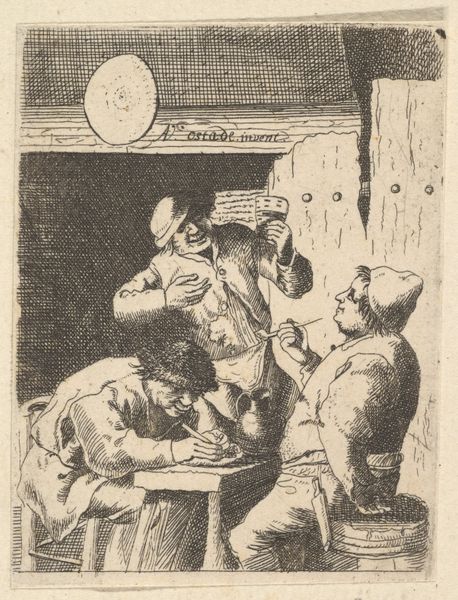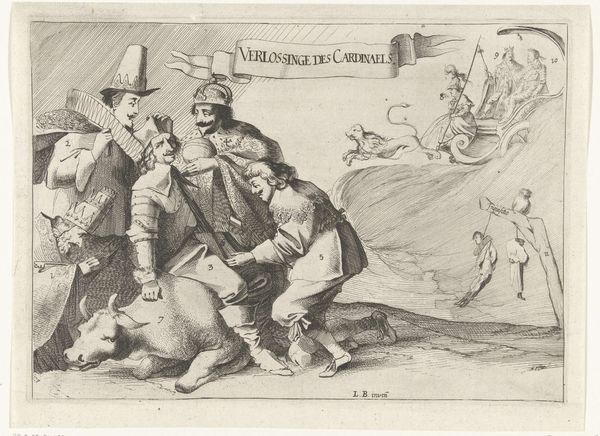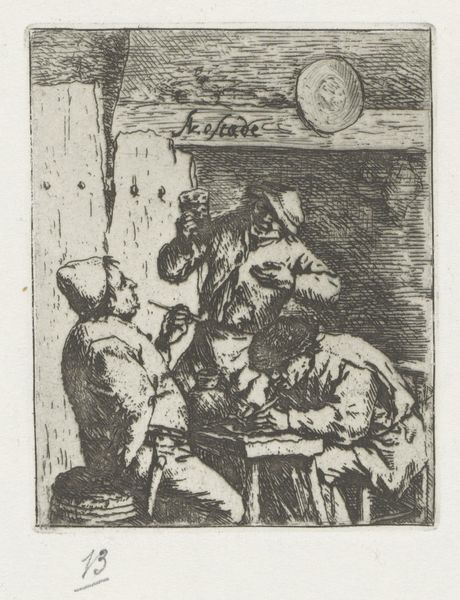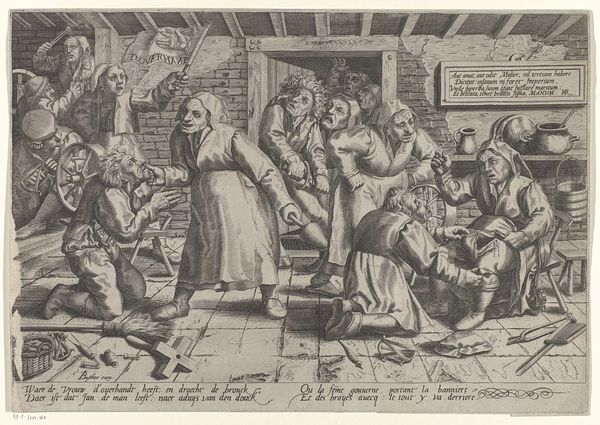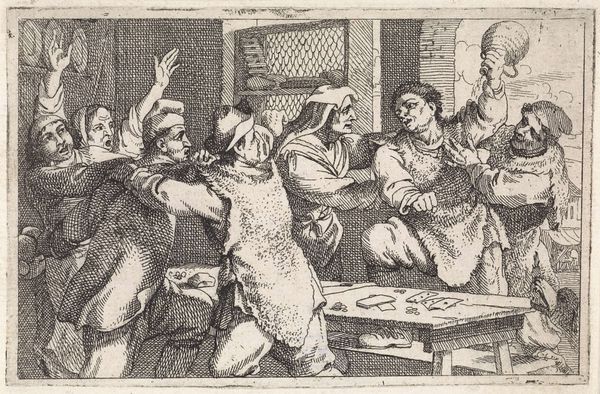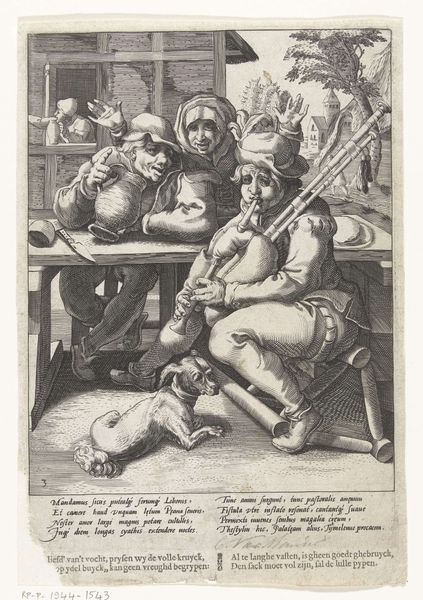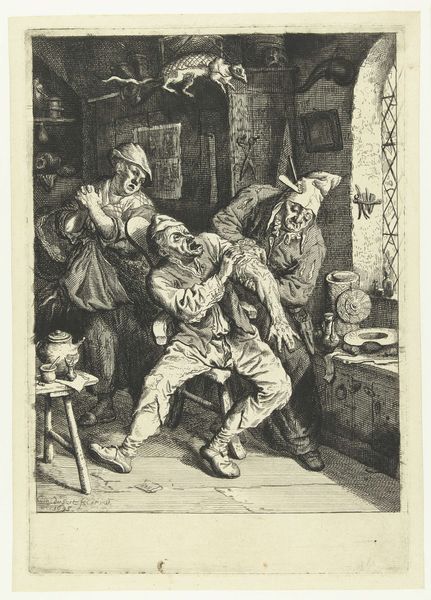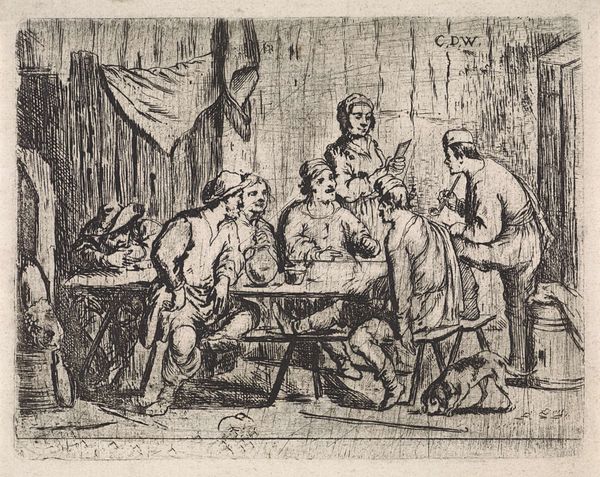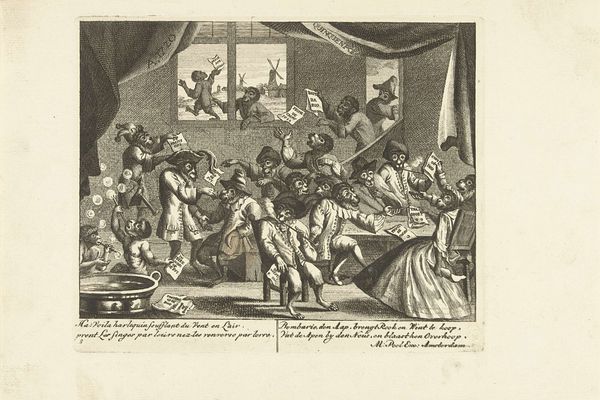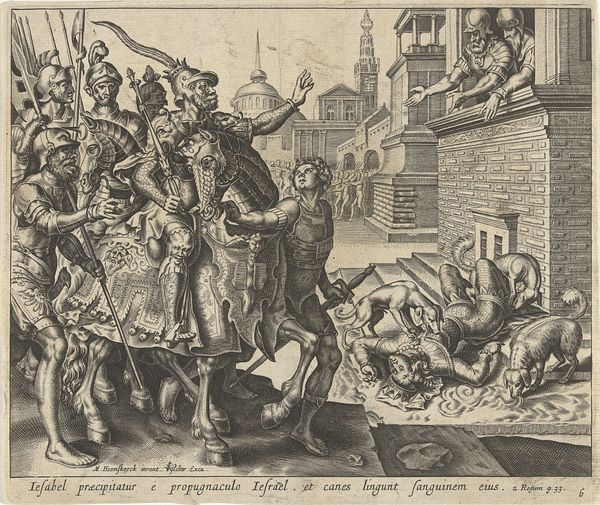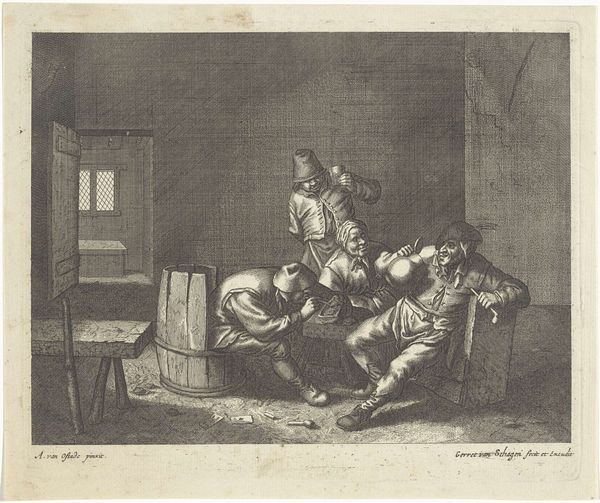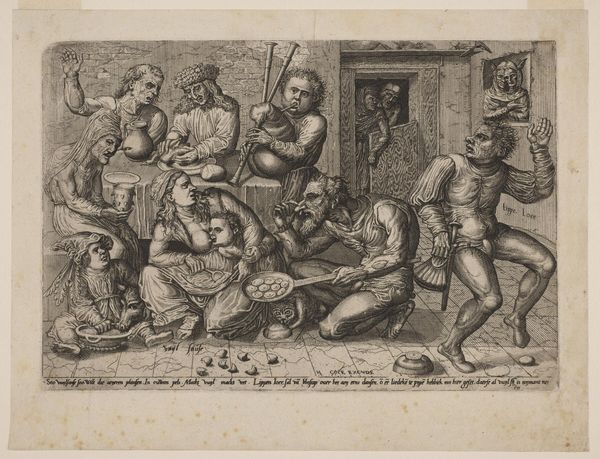
print, engraving
#
narrative-art
#
dutch-golden-age
# print
#
old engraving style
#
genre-painting
#
history-painting
#
engraving
Dimensions: height 170 mm, width 222 mm
Copyright: Rijks Museum: Open Domain
This etching, titled "Mislukt spel om Schenckenschans," was created between 1635 and 1636 by an anonymous artist. It allegorically depicts the Dutch Prince of Orange losing the city of Schenckenschans through a game of cards. Here, the act of gambling is loaded with symbolic weight, mirroring the high-stakes political and military maneuvers of the time. The imagery of gambling and games of chance can be traced back to ancient Roman concepts of Fortuna, the fickle goddess of fate. Just as the roll of dice determined outcomes in ancient games, so too did chance and circumstance shape the fates of nations. This symbol surfaces in various contexts throughout history, often reappearing during periods of uncertainty and conflict. Such symbolic continuities reflect the collective anxieties and aspirations of societies. This resonates deeply, tapping into our subconscious understanding of fate, risk, and the precarious nature of power. In this image, the game becomes a powerful metaphor for the vagaries of war and the ever-present threat of loss, engaging viewers on a profound psychological level.
Comments
No comments
Be the first to comment and join the conversation on the ultimate creative platform.
